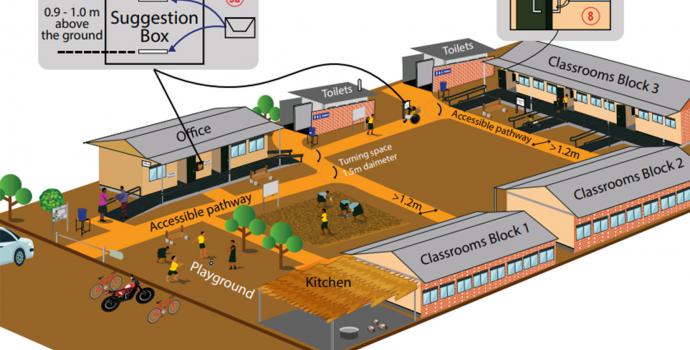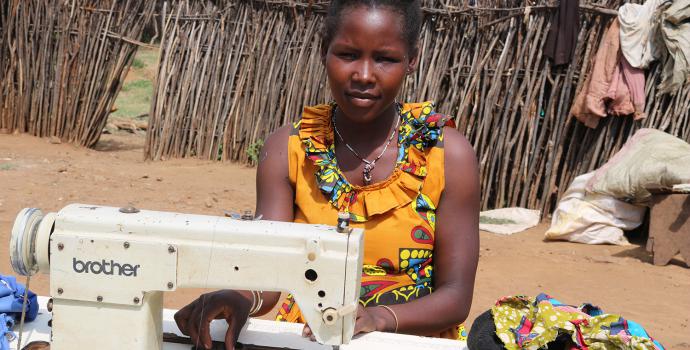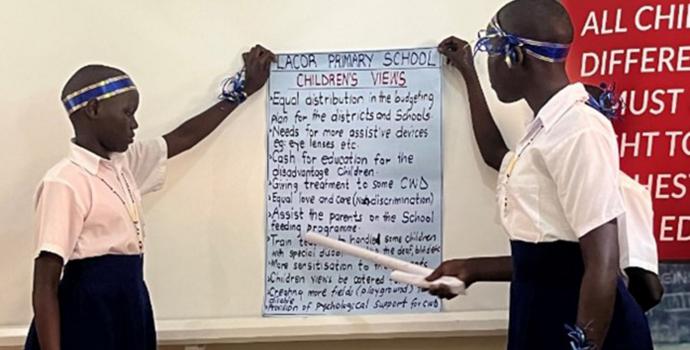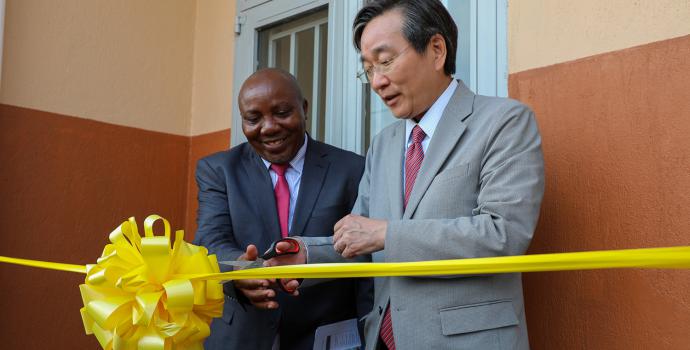"Not just for refugees" - nutrition campaign benefits local mothers and children too
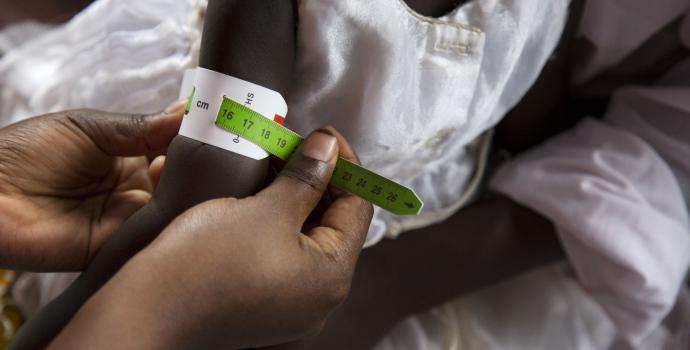
The COVID-19 outbreak has affected and disrupted services for children and mothers across Uganda.
In Kyaka II refugee settlement in western Uganda – where more than 123,000 Congolese refugees now live – Save the Children runs integrated Maternal Child Health & Nutrition (MCHN) and Targeted Supplementary Feeding Program (TSFP) activities, with support from the World Food Programme (WFP).
When COVID-19 broke out and Uganda went into lockdown, the MCHN services were temporarily halted. We came together with other partners to work out how to safely resume these essential services, while adhering to the government’s COVID-19 prevention guidelines such as physical distancing.
To do this Save the Children introduced an MCHN distribution schedule allocating specific days for distributions in each village. Two or three members of the Village Health Team (VHTs) and a local leader were identified and given the schedule so they could mobilize the community at the right time. They were also supported to manage crowds and reduce the time that people spent waiting at the distribution point, to make sure there was no overcrowding.
Special effort was made to target both refugee and host community villages. The project aims to provide services to 70 percent refugees and 30 percent Ugandan host communities, in line with the government’s REHOPE (Refugee and host community empowerment) strategy. However, achieving this has been difficult – the project started in January 2020 and at the start 90 percent of people receiving the services were refugees.
This changed with the new approach.
The VHTs and local leaders effectively mobilized both communities. This time the activities reached 71 percent refugees and 29 percent nationals.
Linda*, a Ugandan mother, says she previously thought, incorrectly, that the services are just for refugees:
“I started receiving my antenatal services from Bujubuli health center in June 2019 and I gave birth in March this year,” she says. “I didn’t get a chance to receive the nutrition porridge or other nutrition services since I was told by my friend that porridge is only meant for refugee women and their children.
“Overcrowding at the facility (prior to this project) always scared me and most of my friends from the host community. This sometimes leads to quarrels and chaos among the many people waiting for the nutrition porridge. Being pregnant at the time I realized that could not manage the chaos. I decided to give up on porridge.”
So what changed her mind?
“Our VHT mobilized all pregnant and lactating women and children under 2 years to come for services at the nearby health centers,” says Linda. “Me and my friend decided to try again, but we found a different and better arrangement. It was very easy to access services since host community and refugee villages were receiving nutrition services on different days. The numbers were few and we spent less time at the facility.
“When I returned with porridge I encouraged all my friends and neighbors to go for services as well. Now many are aware that both refugees and host communities are entitled to these services.”

